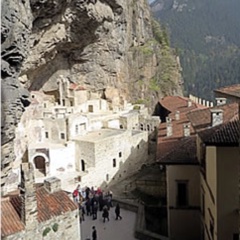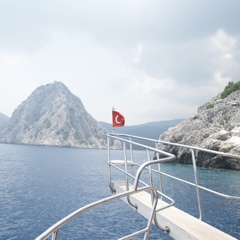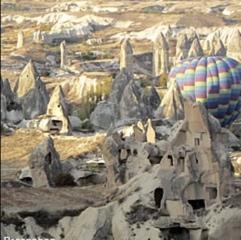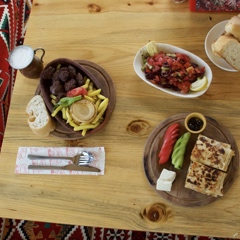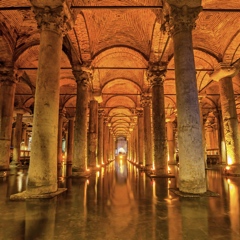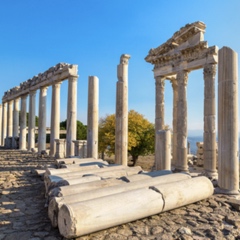The Seljuk Turks came to Anatolia in 1071 as conquerors from the Great Seljuk Empire in Iran. They brought with them the architecture of that country, but adapted it beautifully to the requirements of Anatolia.
The Essence of Seljuk Style
The Seljuks of Rum built monumental stone buildings of elegantly simple design and harmonious proportion, for the most part severely plain, but with bursts of elaborate decoration around doorways.
Most Anatolian Seljuk works are of dressed stone, with brick reserved for minarets. Frequent use of mukarnas (stalactite vaulting) adds
Many Great Seljuk buildings in Iran have large open courtyards and lofty eyvans (three-sided rooms with the four side open to a courtyard).
Architects in the Seljuk Sultanate of Rum (“Rome,” ie, Byzantium in Anatolia) often decided the court must be covered to protect against the colder and snowier winters of the Anatolian plateau. Thus some medreses (theological seminaries) such as the Çifte Minareli in Erzurum will have an open court, and others, such as the Great Karatay in Konya, will have covered courts.
Where to See Seljuk Buildings
Konya is the best place to see Seljuk architecture, and the other great Seljuk cities—Alanya, Erzurum, Kayseri, Sivas—have more good examples, but you may run into Seljuk works in almost any Anatolia city or town, especially in Central and Eastern Anatolia. Seljuk power extended (briefly) as far as the Aegean coast, so you’ll see Seljuk türbes (tombs) even in—appropriately—the town of Selçuk, next to Ephesus, south of Izmir.
The great caravanserais, or hans, are among the finest and most characteristic of Seljuk buildings. Built during the 1200s to encourage trade throughout the empire, several dozen survive in good condition. More…
Seljuk-Mongol Style
After the Mongol invasions of the mid-1200s, the wealth and power of the Seljuk empire declined. The few late 1200s-early 1300s buildings that survive are fascinating amalgams of Seljuk and Mongol styles. These include the bimarhane(madhouse) in Amasya, and the Süngür Bey Mosque in Niğde.



